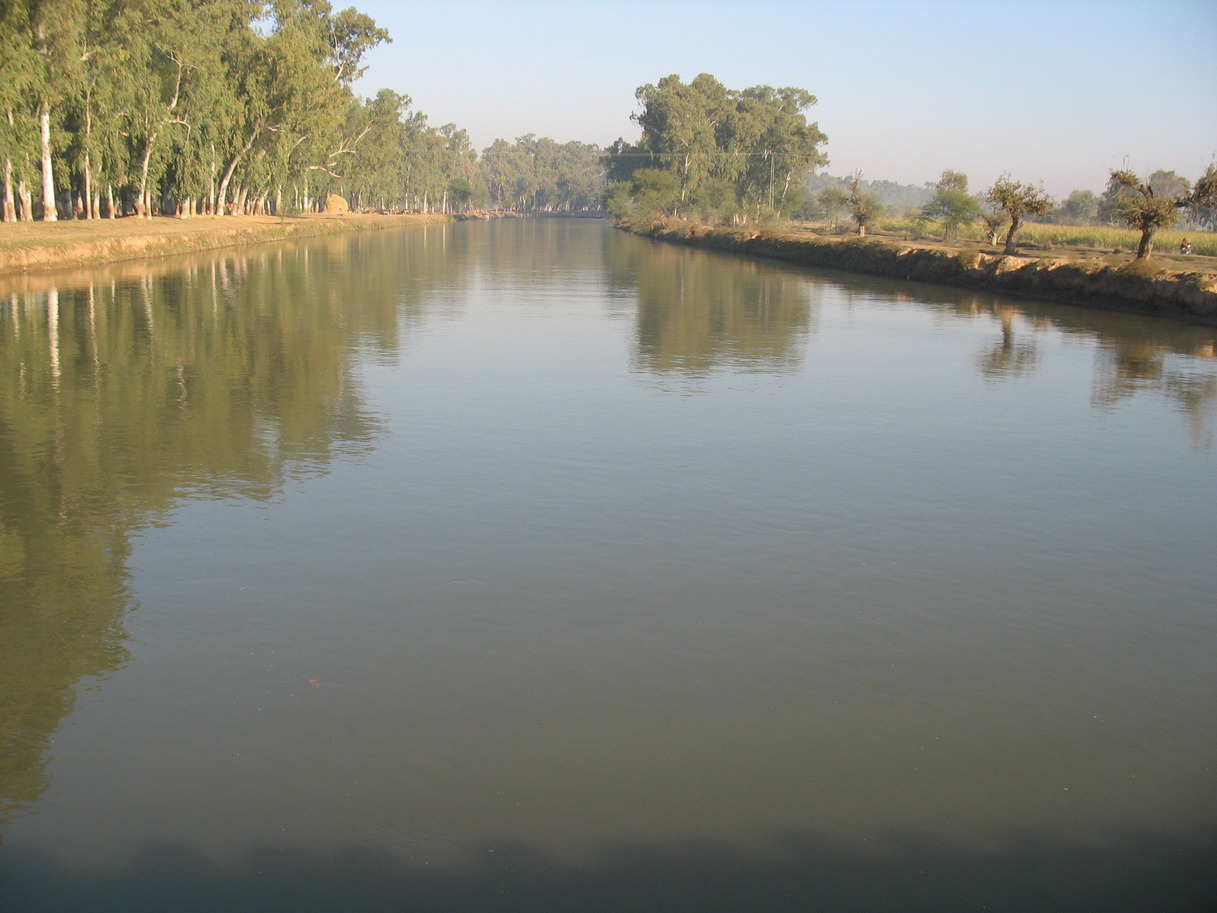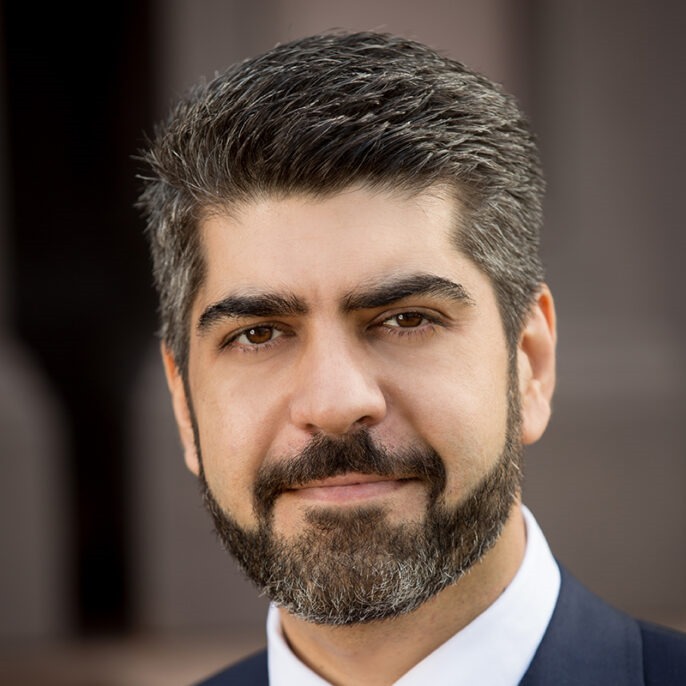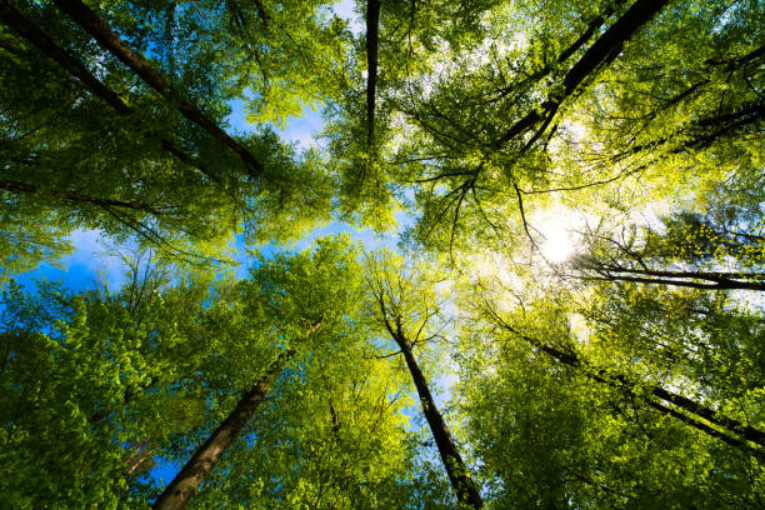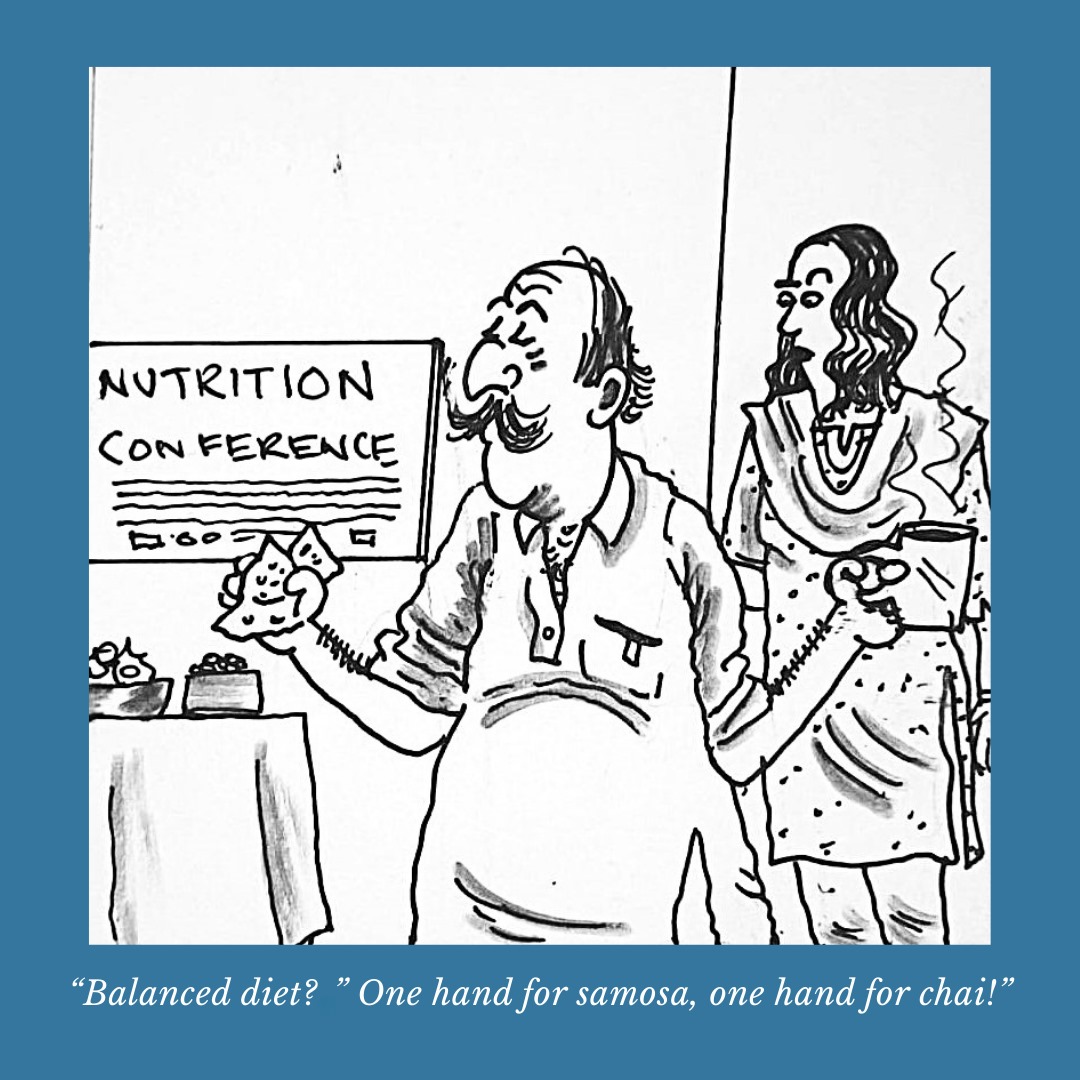How We Got Here and Where We’re Going: A Conversation about Climate and Water with Ahmad Rafay Alam
October 11, 2025

The Outlier is back! We have a new look, new ideas and whole new host of unexpected insights to keep you informed about what is happening in the world around us. Each month, a specific theme will be followed. We are starting with AI for August, Nutrition for September and Climate Change and Water for October, with more to come. Hope you enjoy and join us in this exciting new chapter.
How We Got Here and Where We’re Going: A Conversation about Climate and Water with Ahmad Rafay Alam
Interviewer: Zahra Hussain
We are excited to present our conversation with Ahmad Rafay Alam, an environmental lawyer, climate activist, and member of the Hisaar Foundation Think Tank on the Rational Use of Water. He will also be speaking at Hisaar Foundation’s 7th Karachi International Water Conference this October.


Ahmad Rafay Alam is an environmental lawyer with over 25 years of experience as a lawyer and has been a climate activist for over 20 years, taking on roles as a chair of several public sector utilities and member of many climate and environmental councils. He was also a 2014 Yale World Fellow. Rafay currently serves as Senior Advisor to Air Quality Asia and as a Member of the Hisaar Foundation Think Tank on the Rational Use of Water.
Q1. You started your career in corporate law – why did you choose to shift over and become an environmental lawyer and activist for the cause of water and climate change?
I began my career at a generalist practice, which was very helpful and brought me a lot of exposure to different types of law. During a trip to New York in 2004, I discovered a wealth of literature on urban planning, and that got me thinking about Lahore’s urban planning. Around that time, in 2005, the local administration announced plans to widen the Lahore Canal Road, which would have meant cutting down thousands of trees along its banks. Civil society in Lahore quickly mobilized, and as the only lawyer among them, I was asked to find a legal route to challenge the project. That’s when I stumbled upon Pakistan’s Environmental Protection Act of 1997 which wasn’t even a decade old at the time and had relatively few practitioners. The Act requires environmental approvals for certain projects, and using its provisions, we were able to negotiate with the administration. That experience was my entry into both activism and environmental law. It felt more connected to my life and my interests, and I decided it was the path I wanted to pursue. And with my daughter born around that time, it felt like a good idea to spend my career helping people breathe clean air rather than making rich people richer.
Q2. What does your job look like on an everyday basis? What does it mean to be an environmental lawyer in Pakistan?
I had a firm for about a decade, but my partner and I decided to part ways amicably because our own practices started diverging. I was focusing on the environment and the development sector, and my partner was focusing more on entrepreneurship, law and start-ups. My work now is about a little bit of litigation and mostly consulting. Now I do a lot of work for government projects and consulting projects that require some sort of environmental lawyer – I put on my suit and sit in the boardroom quietly until someone asks me my opinion.
Q3. You often mention justice and water together – please explain for our readers what this means and how it affects the common man?
To understand water justice, you first have to recognize that “water” itself operates on many different levels and each comes with its own rules and challenges. Water can mean stormwater that needs drainage systems, river water that supports ecosystems and drinking supplies, bottled water that’s commercialized, or the lack of clean water that leads to health crises like child mortality from diarrhea. It’s also tied to production – thousands of liters go into making everyday goods like cotton. Because water functions so differently across these contexts, there isn’t one single idea of water justice. Water justice affects people in very different ways depending on where they live. For someone in Karachi, it’s about access and quality – buying water from tankers, worrying about contamination, and dealing with poor drainage during rain. In South Punjab or Cholistan, it’s about scarcity – finding, storing, and preserving what little water exists in a dry landscape. Up north, people higher in the mountains often have more control over water than those in the valleys below, creating imbalances even within communities. And in industrial cities like Faisalabad, workers rely on massive amounts of water indirectly through industries like textiles. So, in Pakistan there isn’t really a homogenous ‘common man.’ Everyone experiences water justice, or injustice, in many forms, all shaped by geography, access, and livelihood.
Q4. What kind of work have you done as an environmental lawyer, and do you feel that there have been ‘wins’ and positive impacts in your journey?
In my role, I often help shape how large public projects are designed and implemented. For instance, I served as the legal advisor for the Peshawar BRT project, funded by the Asian Development Bank, where I helped establish the KP Mass Transit Authority and set up its entire legal and corporate framework. I’ve advised governments on reforming regulatory and environmental approval processes. More recently, I’ve been part of the team redrafting Sindh’s outdated water law – expanding its scope beyond irrigation to treat water as a holistic resource for the province. So, the work can be quite impactful, even if it’s incremental. These projects operate at a systemic level, shaping how governments think about and manage public resources. The Peshawar BRT, despite its flaws, now serves thousands daily and Sindh’s new draft water law could redefine how water is governed for decades. Social and environmental assessments are now built into projects, which wasn’t the case before.
Q5. How are the responsibilities for climate response and implementation divided between provincial and federal governments?
At the federal level, we have an Environmental Protection Agency, and we have climate law. But under our constitution, environmental issues are actually governed by the provinces. We do have a Ministry of Climate Change, but its primary responsibility is to monitor the implementation of our climate and environment agreements with the United Nations. The actual work of climate change governance is still with the provinces. Expecting the Ministry of Climate Change to undertake flood protection throughout Pakistan is impractical because it doesn’t have the field formation or the budget to do it. Before the 18th Amendment, the environment was regulated concurrently, meaning that the provinces and the federal government worked together. That system wasn’t necessarily more or less effective, but it was a different approach to the allocation of responsibility.
Q6. What has caused the recent floods – bad governance or nature unleashing its anger at how we manage our water resources?
The floods we’ve seen this year really come down to a mix of climate change and some very unusual weather behavior. In early August, the World Weather Attribution group published a report saying that between late June and late July, Pakistan saw monsoon rains that were about 15% heavier because of global warming. But what’s fascinating is that for the first time in recorded history, those monsoon clouds made it past the mountain ranges: the Himalayas, the Karakoram, the Hindu Kush. Normally, those 15- to 20-thousand-foot peaks block them completely. But this year, because of something called western disturbances, the clouds were pushed higher, forcing them to drop rain as far as the Tibetan plateau. And when that kind of rain falls on steep mountain terrain, you get these sudden, violent cloudbursts and flash floods like the ones we saw in Himachal, northern Punjab, and Uttarakhand.
“Between late June and late July, Pakistan saw monsoon rains that were about 15% heavier because of global warming.”
With that said, in Gilgit-Baltistan and Skardu, the story was a little different. The monsoon doesn’t fall in those areas. Those early floods were caused by GLOFs, glacial lake outburst floods, where melting ice causes glaciers to burst their banks. That’s a direct result of climate change. And as the season moved forward into July and August, we started seeing heavy rains in Khyber Pakhtunkhwa, Swat, Buner, all through those valleys, incredibly intense rainfall, exacerbated by illegal timber mining in those areas. When you strip the land of trees, the soil can’t absorb the water, and the slopes become unstable. So, the flash floods carried not just water but mud, rocks, whole trees, which is why they were so destructive. Then you come down to Punjab, where the Ravi and Chenab rivers swelled high enough to damage infrastructure and displace people.
It’s in our response that governance failures really show. In KPK, the early warning systems weren’t strong enough. In Punjab, the rescue operations started well but quickly lost momentum. Over two million people have been displaced, and the state’s capacity to respond has been stretched thin. Of course, no one could have predicted such a freak climate event, but still – what all this shows is that while climate change is certainly the driving force, the extent of the destruction is also a story about planning, preparedness, and how we manage our environment.
“While climate change is certainly the driving force, the extent of the destruction is also a story about planning, preparedness, and how we manage our environment.”
Q7. There seems to be a need for greater mitigation or preparedness – is there a push for people protection or climate-based adaptation laws for the most affected people in these areas?
Our people and our cultures are tied to these rivers. And these rivers have historically flooded, they always have. What people used to do before the British arrived is they tried to live their best with the river. They knew it flooded, so they’d find some higher ground and form settlements over there. When the British came to India, they viewed the rivers in Punjab and Sindh as a resource that could be harnessed for agriculture, through barrages and canals. In building those barrages and canals, you needed to understand how rivers worked. Through a very Anglo-, global North perspective of science conquering nature, they tried to understand rivers based on the infrastructure they were building. So, if you’re building a barrage or a bridge, you need to know whether that river is going to flood and if so, to what extent so that you can lay the foundations of the barrage or the bridge accordingly. In my opinion, with this approach, we’ve failed to understand how rivers change themselves when you interfere with them. I once met a river engineer, and he told me that the first thing they teach you in river engineering school is that you can’t engineer a river. The impacts of such infrastructure, such as barrages and dams, on the geomorphology of rivers will be felt maybe decades, if not centuries, after, as well as at least 10s if not 100s of miles away from where the infrastructure was placed. I think what we need to do rather than a people-centric approach is that we need to rethink how we approach something as valuable as a river. I think we need more of a rethink than trying to solve the problem with this sort of engineering global North approach that we currently have.
“I once met a river engineer, and he told me that the first thing they teach you in river engineering school is that you can't engineer a river.”
Q8. Recently, there was a lot of debate and protests about the Cholistan Canal Project; where do you stand on it?
The plan to build a canal to Cholistan and irrigate it is part of a plan to have 6 canals extended through various parts of Pakistan. Currently, the approximations are that over 90% of water is used in agriculture, and over 40% of Pakistan’s workforce is employed in agriculture. The majority of our agriculture is focused on four major crops: cotton, rice, sugar and wheat. Right now, it takes about 1700 liters of water to produce a kilogram of sugar, 8000 liters to produce a kilo of cotton, and 2200 liters to produce a kilo of rice. There are about 100 sugar mills in Pakistan, with only 45 very wealthy owners. The All-Pakistan Textile Mills Association and the Rice Exporters association are also some of the richest and most powerful entities in Pakistan. What’s happened with our water is we’re taking a vast majority of it and handing it to sugar mills and to the rice exporters so that they can make billions and billions of rupees.
Meanwhile, half of the population of the workforce is employed in agriculture, and that’s where poverty is. We’re taking 90% of our water, putting it into three or four major resources to keep a handful of people rich so that the workforce of Pakistan can be kept close to poverty and told that there’s no water. What we need is a rethinking on how the water resources are going to be distributed. You could do other things with water than make sugar or cotton. With Cholistan, we are trying to move into the 21st century by adopting these same agricultural practices that will make a handful of people rich and the people in Cholistan poor and thirsty. So that’s what’s flawed with the thinking behind extending these canals. Especially in the time of climate change, when water availability is under such threat, it just doesn’t make any sense.
“We're taking 90% of our water, putting it into three or four major resources to keep a handful of people rich so that the workforce of Pakistan can be kept close to poverty and told that there's no water.”
Q9. Some people speculate that fresh water will be a major concern in the future, maybe ever causing wars. Is that something that Pakistan will have to deal with?
Throughout the course of history, including ancient history, there have been a surprisingly low number of conflicts over water, because water is usually something that’s too serious to fight over. It’s usually something people negotiate over. In the case of Pakistan, you’re going to see people deprived of clean drinking water in cities. That is going to be an issue but it’s not going to be a transboundary issue. If there’s going to be any violence, it’s going to be because not enough people have access to clean water. Drinking water is a fundamental right, and if peoples’ fundamental rights are being violated, it’s perfectly natural for them to protest.
Q10. You are associated with Hisaar Foundation, member of its Think Tank and a regular supporter. What do you see as the role of the KIWC and what do you feel are its major contributions?
The KIWC has always had its finger on the pulse of Pakistan’s water related issues and has been able to convene thought leaders and industry leaders from around Pakistan and the world to come and think about water in Pakistan. I’m particularly excited about the 7th Karachi International Water Conference because there are aspects of a global South alliance that I’m looking forward to. There’s a panel of water experts that our Foundation, which is one of the hosts of the conference, launched along with the International Water Management Institute. We’re hoping to put together a panel in every country of water experts that can inform global policy initiatives. What we’re most interested in, especially as the international order collapses and Global North entities don’t have the moral authority that they used to, is to form a network of Global South countries that can raise a scientifically backed voice through these sorts of committees, these councils, so that we can have an international framework that responds to the Global South and its needs on water. There are people from many parts of the world in attendance, from Bangladesh, from Sri Lanka and hopefully from Central Asia as well.
Q11. Alongside this idea of a Global South alliance, and positive steps taken by NGOs, is there anything that you feel is a cause of hope at this time, especially if you're very young?
You’d be surprised at what the human imagination can do – you just have to believe in something and work on it. When the first computer was invented, the electronic numeric integrator and calculator by IBM, it took up the size of a small hotel to only do basic arithmetic. It’s been less than 50 years, and our phones now have the computing capacity of 1000, if not 100,000 of those. Look at where our collective imagination took technology! If our imagination wanted to use technology to solve the climate crisis, it could. We just need to have that collective imagination. You also have to address and dismantle the capitalist and the consumerist, the patriarchal, and the colonialist mentalities that characterize our cultures, our civilization. You have to work to eliminate them and come up with new things, or we won’t be able to deal with this crisis.
“If our imagination wanted to use technology to solve the climate crisis, it could. We just need to have that collective imagination.”
Thank you so much for your time and insights.
No worries, best of luck.
This interview has been edited for length and clarity.


